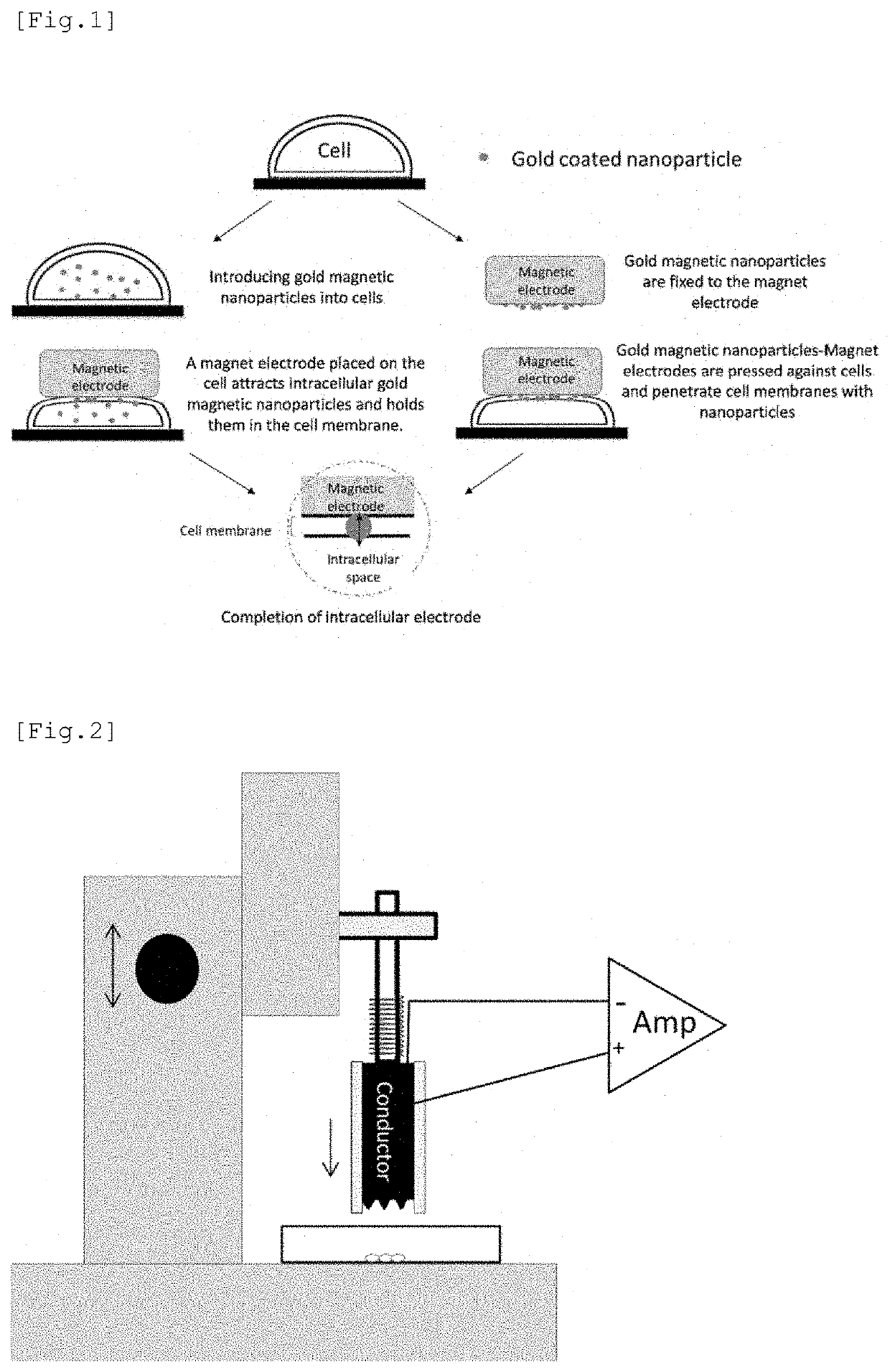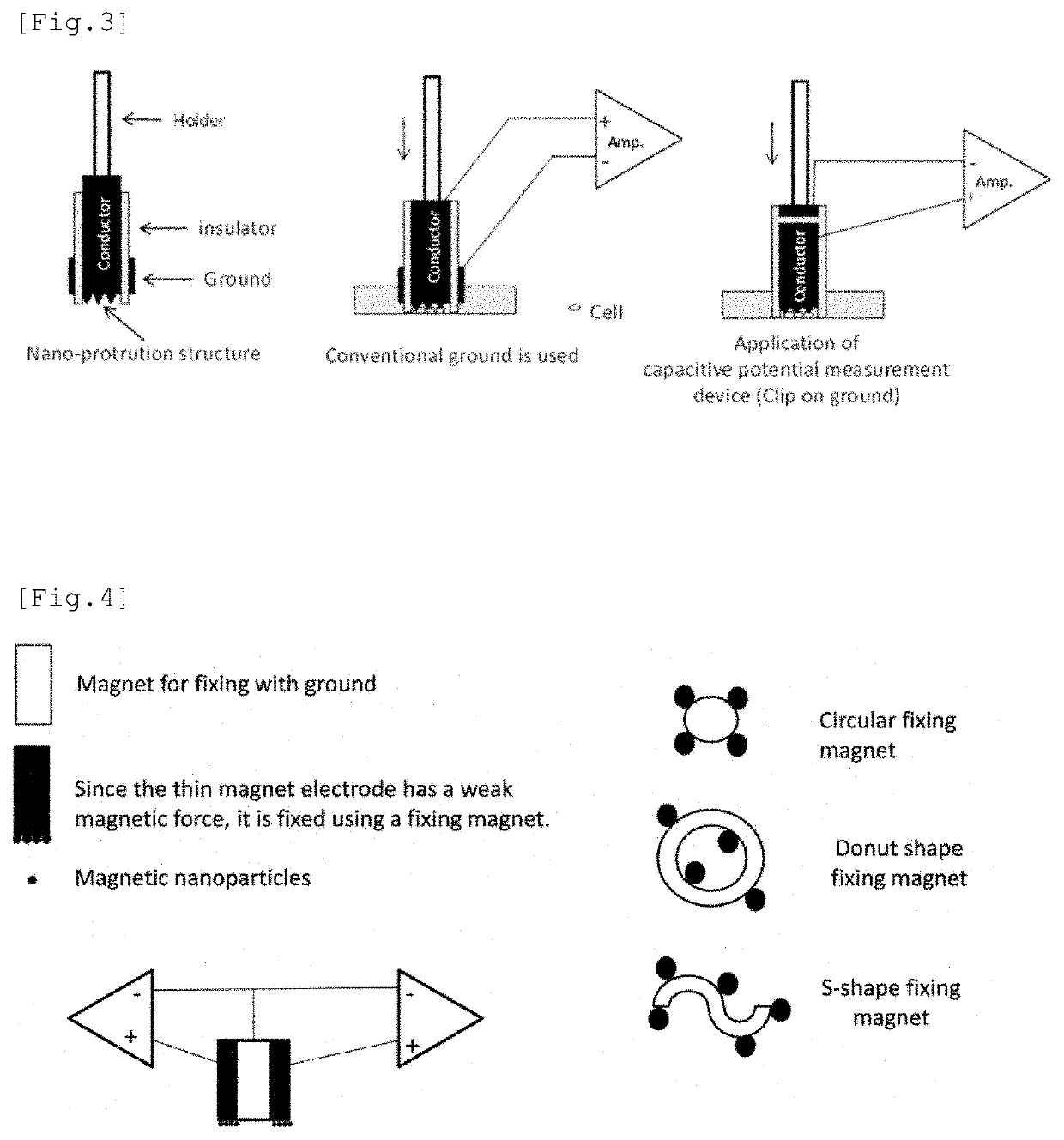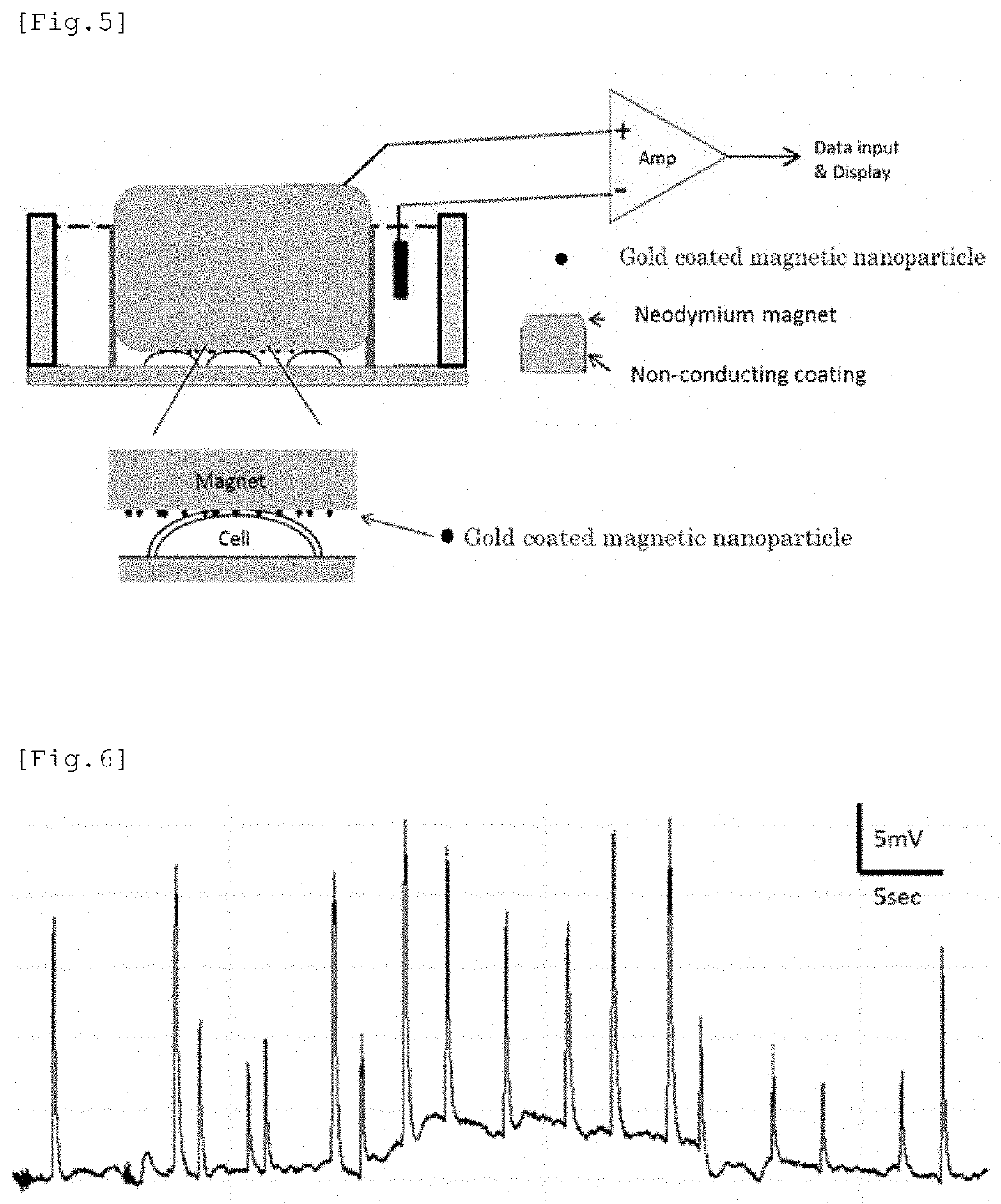Electrode having NANO structure at tip
a technology of nanostructure and electrode, which is applied in the direction of instruments, specific use of bioreactors/fermenters, biomass after-treatment, etc., can solve the problems of measuring devices, and achieve the effects of suppressing cell damage, and reducing the number of electrodes
- Summary
- Abstract
- Description
- Claims
- Application Information
AI Technical Summary
Benefits of technology
Problems solved by technology
Method used
Image
Examples
examples
[0161]Examples will be shown below, and the present invention will be more specifically described; however, the present invention is not limited thereto.
[0162]Other terms and concepts in the present invention are based on the meanings of terms commonly used in the art, and various techniques used to carry out the present invention particularly including techniques whose sources are clearly stated. Except for this, those skilled in the art can easily and surely carry out the procedure based on known documents and the like.
[0163]In addition, various analyses were performed according to the methods described in the analytical instruments or reagents used, the instruction manuals for the kits, catalogs, and the like. The technical documents, patent gazettes, and patent application specifications cited in the present specification shall be referred to in the description contents of the present invention.
(Reference Example 1) Measurement of Intracellular Potential in HEK Cells that Stably...
reference example 2
(Reference Example 2) Method of Measuring by Applying the Principle of a Charge Amplifier
(Reference 2-1) Preliminary Experiment for Applying the Principle of Charge Amplifier
[0183]This experiment is an experiment to show that the measurement system is effective in measuring the bioelectric potential by combining the charge amplifier with nanoparticles introduced into the cell (FIG. 12).
[0184]Circuit A adds a rectangular current pulse (20 ms, 120 pA) to a model cell (cell equivalent circuit: a circuit in which a 500 MΩ resistor and a 33 pF capacitor are connected in parallel) to the current-clamp mode patch-clamp amplifier Axoptch 200A used for recording. The potential change through the equivalent circuit was measured (FIG. 8 circuit A).
[0185]Following that, a conductive glass that serves as a sensor for the charge amplifier was connected between the equivalent circuit and the negative input of the amplifier. In order to make this conductive glass act as a capacitor, an aluminum foi...
example 6
(Example 6) Construction of “Capacitive Potential Measuring Device” with Holder
[0246]By applying the “capacitive potential measuring device method” (Japanese Patent Application No. 2018-87689) developed by the present inventors, a compact “capacitive potential measuring device” with a holder (FIG. 3, right) was constructed. Here, as shown in (FIG. 3, right), the ground (reference electrode) of the “capacitive potential measuring device” with a holder is integrated with the electrode by connecting it to the negative side of the measuring instrument or the ground terminal (See the description of “Clip on ground” in 4.4-4 above). This “capacitive potential measuring device” with a holder has a conductive nano (particle) structure at the tip that penetrates the cell membrane. By detecting the change in electric potential inside the cell and charging the conductor (magnet electrode, etc.) with which the conductive nano (particle) structure is in contact. The intracellular potential chang...
PUM
 Login to View More
Login to View More Abstract
Description
Claims
Application Information
 Login to View More
Login to View More - R&D
- Intellectual Property
- Life Sciences
- Materials
- Tech Scout
- Unparalleled Data Quality
- Higher Quality Content
- 60% Fewer Hallucinations
Browse by: Latest US Patents, China's latest patents, Technical Efficacy Thesaurus, Application Domain, Technology Topic, Popular Technical Reports.
© 2025 PatSnap. All rights reserved.Legal|Privacy policy|Modern Slavery Act Transparency Statement|Sitemap|About US| Contact US: help@patsnap.com



